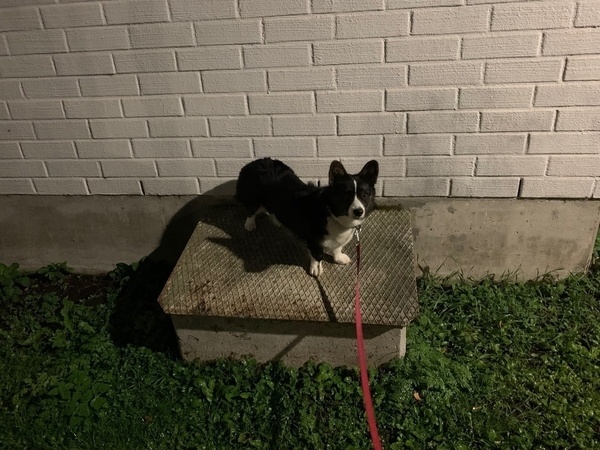DailyDogo 325 🐶

DailyDogo 325 🐶

DailyDogo 324 🐶

DailyDogo 323 🐶

After three months with Agenda, which is still a very good app, I’m back with Obsidian for all the types of notes that I take.
I sang the praises of not having to maintain my setup and instead use apps in the most default way possible recently: Let others deal with the maintenance of the features and use the provided way of doing things, instead of figuring everything out on my own.
This sounds good, however, I discovered I had to use a lot of energy to keep things that are important to me going.
In hindsight, I also noticed that my posts about what apps to use and how to use them were a symptom of the necessity of constantly having to reframe my approach to be okay with not switching back to Obsidian.
To switch from one app for journaling to another for more serious note taking proofed to be too big of a context switch as well. I didn’t “live” in my notes as much as I like to do.
Another big reason for being fine with paying the price of maintaining things myself is the recent development of Obsidian: it now supports multiple windows, something that Agenda lacks and something that makes distilling a bunch of notes into a new one pretty hard.
Finally, I think that working on plugins for Obsidian is a way to lessen the load of maintenance and - since I’m a developer - a way to actually gain some expertise. So in my case, it is not a terrible investment of time and effort.
DailyDogo 322 🐶

DailyDogo 321 🐶

DailyDogo 320 🐶

Dreaming of the day when we can just download our whole microblog (posts, designs, etc.) so we can interact with it locally and upload it through Git or something like that.
(I didn’t post DailyDogo pics the last two days, for some reason. Streak fixed!)
DailyDogo 319 🐶

DailyDogo 318 🐶

DailyDogo 317 🐶

DailyDogo 316 🐶

I recently tried Sorted, a "hyper-scheduler", which is just a fancy task manager that will automatically schedule my tasks around the events for the current day, giving me a clear picture of what, based on my own estimates, I will be able to do.
As great as this sounds, software development is notorious for being hard to estimate, which means that it didn't make much sense to schedule my whole day in this way.
I was interested in an app like this, because it seemed to be a digital cousin of the time blocking practice that Cal Newport employs to get more focused work done, which I also tried for a while but lead to a similar result: I am lucky enough to actually do important work. What I'm struggling with is too much scaffolding.
Now, I also know about the willpower/structure problem: Relying on willpower to do something is bound to fail in the long run, whereas putting structures in place that foster me to do the right thing, if I want it or not, is the sustainable choice.
But: Even structures like task managers can be or become a source of ego depletion, which is exactly the opposite of what they are supposed to be.
And so I strive for a kind of intuitive and mostly maintenance-free productivity setup: Give me a structured writing surface like Agenda (Agenda is a very nice garbage bin for notes that don't really matter), remind me to do things when it is absolutely necessary by using Due. Otherwise either rely on the project management tools at work (tickets and kanban board) or use Reminders to make sure that things that need to be done but are not work in progress and/or are not work related won't be forgotten.
DailyDogo 315 🐶

DailyDogo 314 🐶

DailyDogo 313 🐶

In an effort to make my blog perform better - lots of images means slow load times - I have updated all my images to use this somewhat undocumented micro.blog feature that resizes images:
Micro.blog offers an endpoint to resize uploaded images. Once you upload the image, if you do [micro.blog/photos/](https://micro.blog/photos/#)##x/, but replace ### with the pixel width you want, followed by the full URL to the image, you’ll show an image with that width. For example, if I wanted the image at [json.blog/foo.jpg](https://json.blog/foo.jpg) to be 480px wide, I could use <img src=“https://micro.blog/photos/480x/[json.blog/foo.jpg](https://json.blog/foo.jpg)”>.
This first page load still takes a long while, since my home page weighs in at about 25 mb of mostly image data. But it's a start.
DailyDogo 312 🐶

DailyDogo 311 🐶

Wichtiges Konzept: Zu unterscheiden, ob das Ausbleiben einer Handlung, die man sich vorgenommen hatte, um damit ein Ziel voranzutreiben am Ende Scheitern ist, oder nicht. Letzteres kann der Fall sein, wenn sich herausstellt, dass die Handlung nicht (oder nicht mehr) zum Ziel beiträgt.
Wenn das eigene Task-Management-System zu schwergewichtig ist und z. B. aus zu vielen wiederkehrenden Aufgaben und Wartungstätigkeiten besteht, so dass die Aufrechterhaltung des Systems selbst den Hauptteil des Arbeitsaufwandes ausmacht, dann ist die Nichtdurchführung der Wartungstätigkeiten kein Scheitern, sondern notwendig, um dem Ziel näher zu kommen, obwohl man das System einst zum Erreichen des selben Ziels aufgebaut hatte.
DailyDogo 310 🐶

DailyDogo 309 🐶

DailyDogo 308 🐶

DailyDogo 307 🐶
